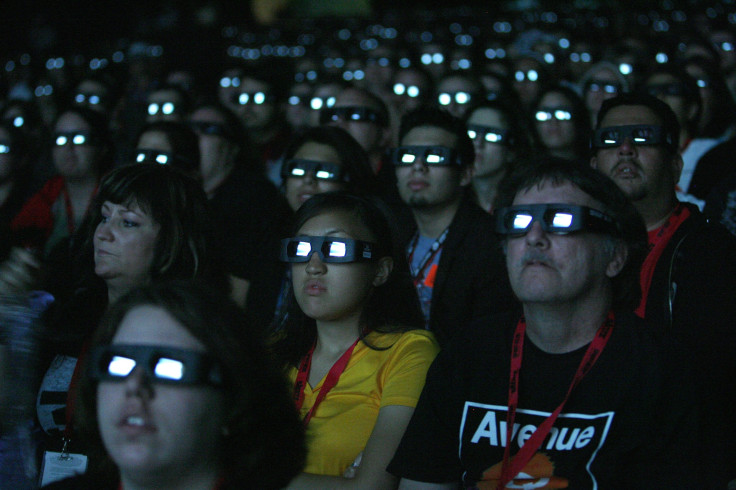Do 3D Movies Give You A Headache? If Studios Can Fix These 15 Production Issues, You Might Find Relief

Three-dimensional (3D) movies have grown in popularity since James Cameron dropped “Avatar” on us, but as 3D televisions become more common in living rooms around the country, so does something else — headaches. A recent study presented at the 27th annual conference Stereoscopic Displays & Applications in San Francisco has revealed over 10,000 problematic scenes from 105 different 3D movies were shot with the “wrong” images hitting both eyes simultaneously.
“That means that the probability of buying a Blu-ray 3D movie with at least one scene with swapped left and right views is about 21 percent, which is quite significant for sensitive people,” said Dmitry Vatolin, Graphics & Media Lab at the Lomonosov Moscow State University, in a statement.
After eight years of research, Vatolin and his colleagues credit themselves with the creation of movie “metrics” — programs that allow researchers to track errors. They used metrics to scan 105 Blu-ray productions and compiled statistics on some of the biggest problems that cause headaches from watching a 3D movie.
Among the 105 Blu-ray discs scanned by the research team, more than 10,000 scenes that cause headaches were discovered. A total of 65 scenes in 23 movies, including "Avatar," "The Chronicles of Narnia," and "Stalingrad," were found to have the left-right view swap. Problematic scenes were especially prevalent in horror movies, which routinely have low budgets.
The 15 reasons for headaches caused by watching movies were split into two categories — equipment imperfections and movie errors. Imperfections of equipment were explained by a natural desire to lessen movie expenses which, subsequently, led to a lower quality of the stereo show. The 3D movie viewing experience can also be ruined by a bad pair of glasses, cheap projectors, and other tools.
Errors in the movie itself, on the other hand, are a little more complicated and cannot always be detected or prevented. Reordering of the left and the right views of the 3D movies was considered the most painful, but also the rarest production blunder. Swapping scenes from left to right can even happen on the most professional production Hollywood has to offer.
“Stereo movies go through their transition period now,” Vatolin added. “Cinema producers start preferring stereo format, it became particularly popular after a fantastic financial success of Avatar. Of course, the quality of the movies increases, and as well does the quality of cinema equipment. Now the quality is often higher than Avatar had, but significant decrease in problems may take about 2-3 years more. Right now looking for a good 3D quality you need to choose high budget movies and properly equipped cinema halls. Wish you fewer headaches!”
Vatolin also referenced a 2011 French poll that asked movie-goers to report how they felt after watching a 3D movie. Only one-third of the respondents said they had no trouble watching while 27 percent reported feeling “certain discomfort.” An additional 22 percent reported a worsening condition, 7 percent called their headaches “terrible,” and 11 percent noticed a worsening condition due to reasons unrelated to the movie. According to Vatolin, everyone who watched a 3D movie felt discomfort at least once.
Headaches caused by the reordering of left and right views are reactions to the wrong scene coming to both eyes at the same time. This is what has to occur in order for our brains to produce a stereo effect. Although the brain is often capable of growing accustomed to these headache-provoking scenes, that clearly doesn’t happen all the time. Vatolin hopes this research can be used practically to cut down on the number of headaches that follow the release of a 3D movie.
Source: Vatolin D, et al. 27th annual conference Stereoscopic Displays & Applications. 2016.



























